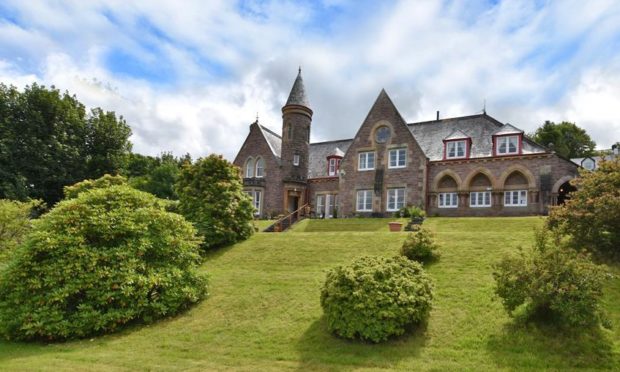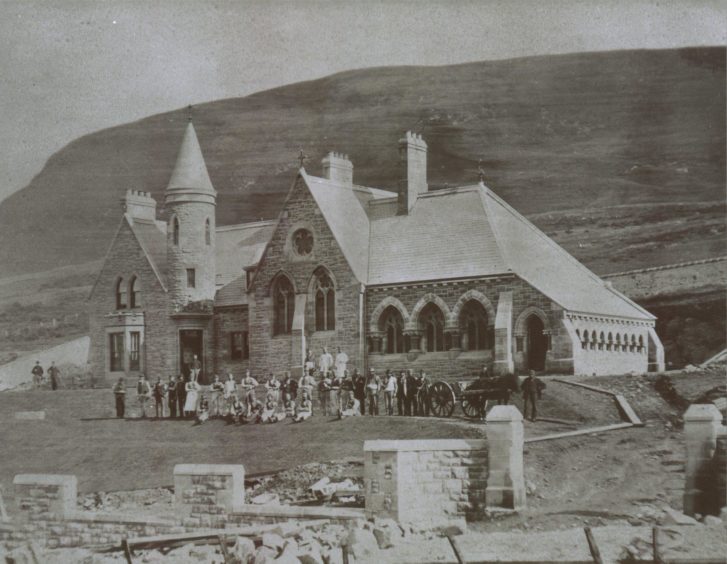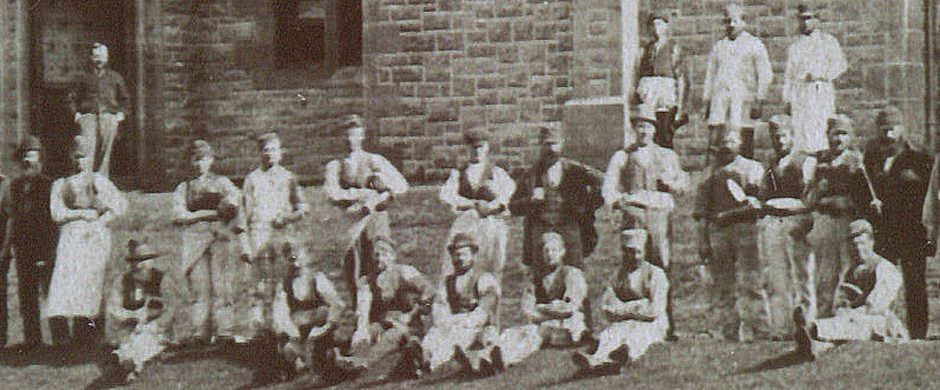A historic Lochaber building has hit the open market for the first time as one property since its construction in the late 1800s.
St Andrews House in Fort William has most recently been operating as a nine-bedroom guesthouse under the ownership of Thomas and Sheena Wynne.
The B-listed property on Fassifern Road was originally constructed in 1880 as a choir school for nearby St Andrews Episcopal Church.
It was widely known to have an open door policy, where fondly remembered ceilidhs, Christmas parties and family occasions were celebrated.
Unable to maintain the upkeep of the B-listed property on overlooking Fort William Town Centre, the church split the property into an East and West wing in 1918.
The west wing, which had housed the school, was converted into a singular dwelling while the east wing remained intact as the headmaster’s residence.
Following its conversion, the properties were then sold as separate entities and remained this way until both properties were bought by the same family and brought back together by 2000.
Now two decades on, the property has been put up for sale by estate agents MacPhee and Partners with an asking price of £720,000.
The owners, who have operated the town’s popular butcher shop and its delivery vans to outlying communities for three generations, admit they have always felt like “custodians” rather than owners, responsible for preserving the property’s history.
Mrs Wynne said: “We will be very sad to leave it but we do so with all the happy memories we have made here over many years. We’ve had some wonderful times here.
“When you’re lucky enough to live in a property like this – because it’s such a beautiful and prominent building, with all the history that comes with it – you always know you’re really only looking after it, to pass it on to the next generation. We always felt a bit more like custodians than owners.”
St Andrews House was designed by noted architect and former Inverness Provost Alexander Ross, who is responsible for a large number of listed buildings in the north, including Inverness Cathedral.
While renovating parts of the west side, Mr and Mrs Wynne were able to expose and restore some of the original wood work and stone work, including numerous inscriptions of psalms dotted around the building’s archways, fireplaces and main doorways.
Mr Wynne added: “I lived with the family in the east side as a boy, and in some respects coming back to the west side of the house with my own family was like coming home. We were very lucky that we could join the two houses together again.”


